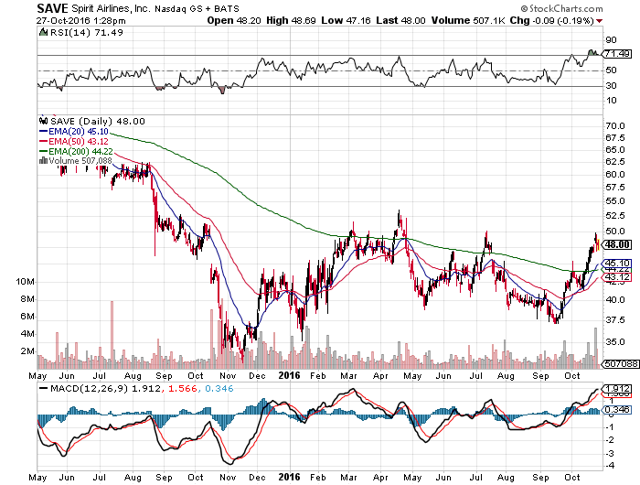


As more schools reopen and more companies manage through the covid crisis, a greater proportion of the U.S. A 20% unit revenue reduction will be significant for any airline and that is likely to continue.Ĭompetitively, while Spirit was more aggressive in restoring capacity than other airlines during the first year of covid, most airlines are not cutting capacity as deeply this fall as they did last year even though leisure demand could fall once again. Since Spirit's model counts on passengers buying a significant amount of services beyond the core airfare and that non-fare revenue per segment has remained flat, SAVE's total revenue per segment was down about 15% or about 20% on a unit capacity (ASM) basis. SAVE's yields on the passenger fare portion of its revenue have reflected the weakness in pricing, with their second quarter passenger revenue per segment down almost 30%. In addition, government regulations to keep airlines ready for a return of demand has meant that airlines have kept more capacity in the market than it would otherwise support.
#Spirit airlines ontime record free
The pricing environment has been weak throughout the pandemic in part because government aid has eliminated the ability of the free market to remove capacity from airlines that would not otherwise be financially solvent. From the fall of 2020 until the spring of 2021 when widespread circulation of vaccines resulted in a dramatic return of demand, Spirit returned more capacity than the big 6 legacy and low-cost airlines but not anywhere near as much as it did either in the summers of 2020 or 2021. The summer 2020 travel season was short-lived as covid cases spiked and airlines began pulling capacity for fall 2020 travel. Airlines including American ( AAL), Southwest, and the ULCCs began to aggressively chase the leisure demand last summer that resulted from three months of very limited U.S. In June 2020, Spirit's capacity reduction compared to 2019 was identical to the industry (down almost 80%), but by July 2020, Spirit's capacity reduction was far less than the industry's 70% reduction in capacity. On the demand side of the equation, Spirit is one of several airlines that aggressively began re-adding capacity last summer, but other airlines, including its ULCC competitors Allegiant ( ALGT) and Frontier ( ULCC), began restoring capacity sooner and in larger quantities. For the most part, Spirit's labor strategies have resulted in a lower percentage of labor disruption, in part due to SAVE's younger workforce compared to other carriers. Some airlines laid off large numbers of non-union management employees and offered massive early retirement and leave of absence programs.

airline industry's labor costs for much of the past 18 months in return for promises that the airlines would not furlough workers and would also be ready to restore service when demand returned. Fearful of a collapse of the airline industry as demand fell to less than 10% of historic levels in the early days of the pandemic, Congress and the White House have essentially paid the majority of the U.S. airlines were given extensive financial assistance from the federal government including payroll grants and loans. is now 18 months into the covid-19 pandemic, airlines have all developed and began implementing strategies to survive and hopefully thrive in and after the covid era. Because the ULCC model has shown strong growth potential and SAVE has a leadership position in the segment, the prospects for Spirit have been strong. passengers in 2019, of which SAVE carried just under half of that total SAVE is the seventh-largest U.S. The ULCC model has been successfully used in Europe but the three U.S. The ULCC model is based on cafeteria or unbundled pricing where the passenger is free to individually purchase as few or as many components of air travel as fits their need, making the core airfare quite low. Spirit Airlines is the largest and oldest of the three ultra-low-cost carriers (ULCCs), a category of air travel that is newer than the legacy/global segment and the post-deregulation low-cost carrier segment of which Southwest Airlines ( LUV ) is the largest. Spirit Airlines ( NYSE: SAVE) has been viewed for a number of years as a high potential airline by investors.


 0 kommentar(er)
0 kommentar(er)
